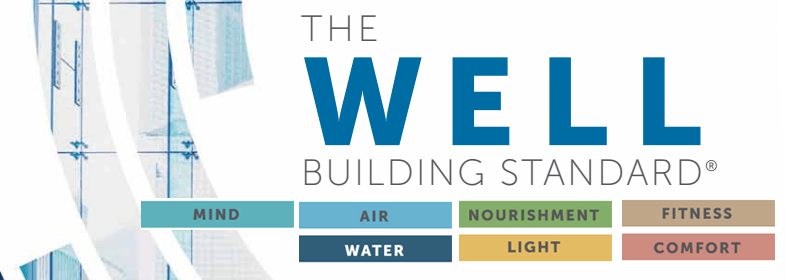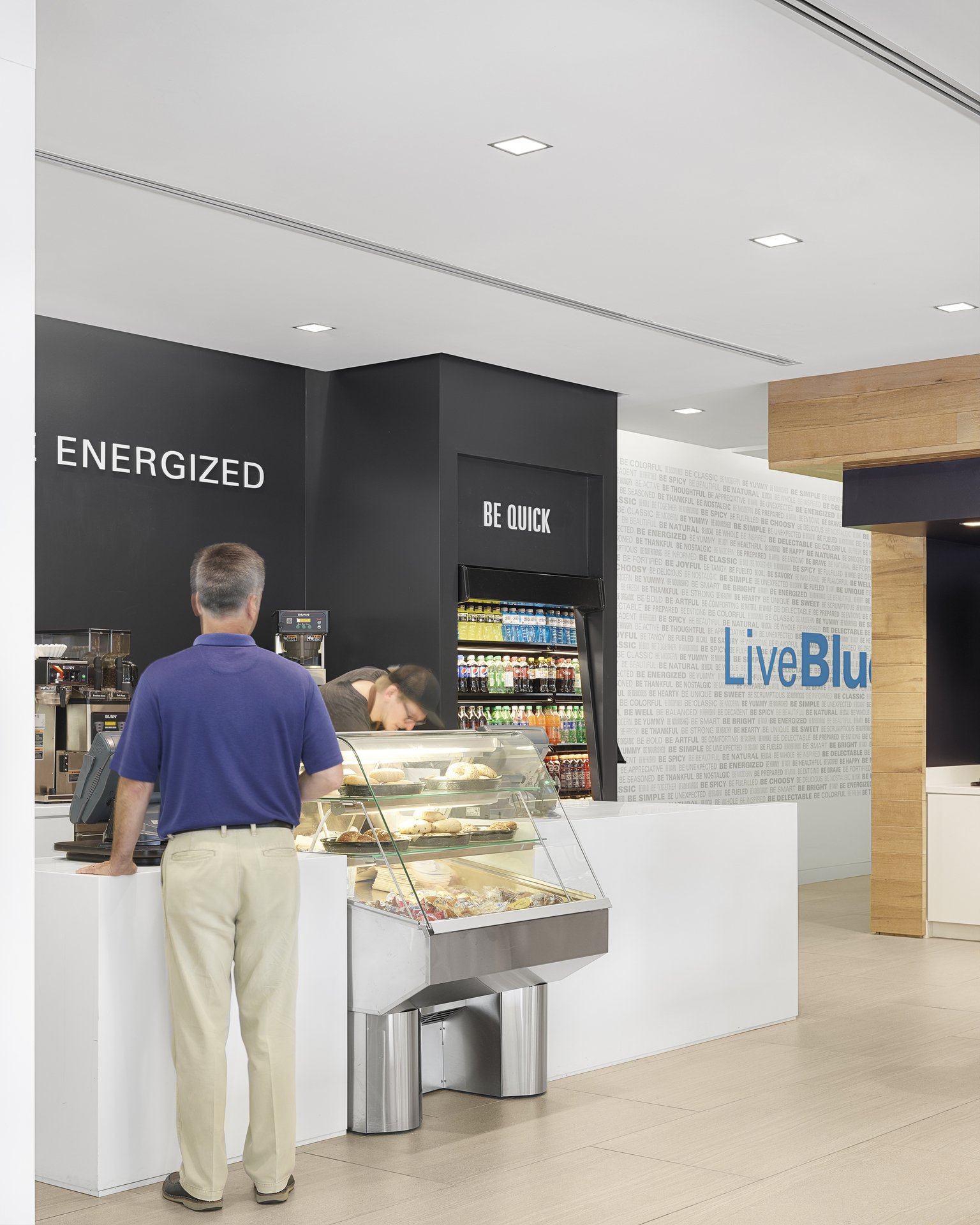5 Ways to Improve Workplace Health with the WELL Building Standard

With the start of a new year, it’s natural to focus on health and wellness. While many of us set goals for a balanced diet and working out, we often overlook improving a large component of our day – the workplace.
The International WELL Building Institute (IWBI) was founded on the belief that improving the quality of a building can help people work, live and perform at their best. Studies, like one from the Health Enhancement Research Organization (HERO) back up their assertions. It found that companies who earned high marks on its HERO Health and Well-Being Best Practices Scorecard, which was done in collaboration with Mercer©, outperformed the 500 largest U.S. companies on the Standard & Poor’s 500 Index over a six-year period.
To improve health in work environments, IWBI released the WELL Building Standard in October of 2014. They cover seven, core concepts of health: air, nourishment, fitness, mind, water, light, comfort and innovation. Alissa Wehmueller, Principal at Helix Architecture + Design, saw how the program could benefit our clients and decided to pursue and ultimately, achieved her WELL AP designation.
“We’ve been encouraging clients to implement many of these strategies for a while. However, this program goes a step further, providing measurable metrics, as well as a breadth of data, to support these ideas,” said Wehmueller.

“With so many initiatives to chose from, knowing where to start can be daunting. If you’re ready to make some changes, start by talking to your associates first.”
“With so many initiatives to choose from, knowing where to start can be daunting. If you’re ready to make some changes, start by talking to your associates first. Find out the biggest concerns in the office, along with which ideas associates are most excited about and work to address those,” said Wehmueller.
WELL accounts for the entire workplace experience, covering everything from air quality to an employee’s physical comfort. Here, Wehmueller shares five strategies that can improve workplace health using the standard as a guide.



-
Support mental health.
There are number of ways that a well-designed office can improve an employee’s mental health from encouraging healthy sleep habits to providing connections and access to nature. Flexibility is another important element. Research has shown a connection between job satisfaction, as well as a group’s cohesiveness, to the presence of varied spaces that support different workstyles. The WELL Standard says work environments should offer spaces to work, focus, collaborate and rest. This means providing a combination of quiet zones, collaborative spaces and multi-functional workstations for team members.
-
Reevaluate lighting.
Effective lighting design, offering access to daylight for our bodies’ circadian rhythms, workstations positioned to reduce glare and daylight modeling are just a few of the thirteen ways the WELL Standard addresses light. Natural daylight and access to views of nature are critical components of supporting employees’ overall well-being and healthy sleep habits.
-
Reduce distractions.
Internal noise can lead to decreased productivity, particularly in open offices where distractions and interruptions are frequent. However, there are a large number of acoustic solutions and design practices companies can use to ensure each employee has a comfortable place to focus. Impact reducing flooring, sound barriers, sound masking and sound reducing surfaces can help companies enhance their teams’ performance and ability to focus.
-
Foster healthy nutrition.
Eating habits are often influenced and reinforced through cues in our environment. Currently, only 8 percent of people consume the recommended four servings of fruit per day, and 6 percent consume the recommended five servings of vegetables per day. Providing access to healthy foods, like fruits and vegetables and communal cooking areas can foster healthier decision making. WELL also suggests the reconfiguration of dining environments to increase the appeal and visibility of nutritious foods. Providing convenient bottle refilling stations with filtered water and signage to encourage drinking water reminds associates to stay hydrated.
-
Start moving.
Encourage employees to take the stairs by making stairwells open and accessible. Another method to incentivize movement is to add physical activity spaces or make changes to the building’s exterior, such as designing cyclist and pedestrian-friendly environments. Organizations can also supplement gym memberships and fitness programs to encourage an active lifestyle outside the office.
Organizations with healthier employees can not only increase productivity and retention, but also reduce health insurance costs for individuals, as well as their businesses. With a variety of elements to choose from, there are multiple ways to reap the benefits of the WELL Standard. Discover which features are the best fit for your organization by contacting us at info@wordpress-345089-1066761.cloudwaysapps.comto schedule a space evaluation.